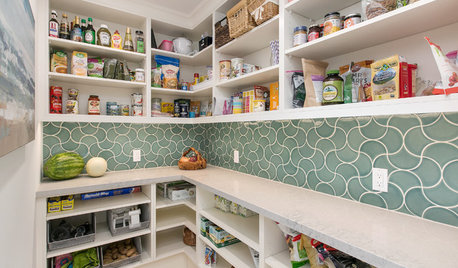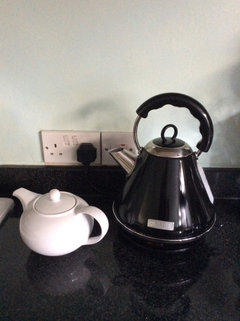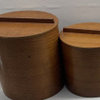Food Safety Quiz From The FDA
carolb_w_fl_coastal_9b
last year
Featured Answer
Sort by:Oldest
Comments (52)
Olychick
last yearRelated Discussions
Senate Bill 510 'Food Safety Modernization Act'
Comments (14)This is a good one to get your blood boiling! Seeing how humankind has evolved since long before our government existed, and even before our government took on the job of saving the world (from what-ourselves), this is just more BS for big brother to get bigger and stronger, taking the power away from the average citizen who can't afford to buy their way into the game. That doesn't sound like a govt. of and for the people to me. Good point about the nitpicking efforts calliope. Like we should believe that the stuff we import from Thailand and China, just to name a couple, is what any of us would consider safe. I don't even think half of us would believe in the labor practices let alone the sanitation practices would be acceptable to us in those places. Lazygardens, it sounds like your leaving out some of the motivation behind your comments. Care to share you background? As far as the food borne outbreaks go, well, the world has not been killed. Anybody ever heard the saying "the world is not a perfect place?" - Well, when did it become the US govt. job to try to perfect it? The track record would show them to be the least capable of perfecting anything!!!!!...See MoreWhole Foods To Label GMO Foods
Comments (33)Thanks for the link Annie, I checked it out, and as of the date of that article, Seminis did sell to Territorial and Johnny's as well as Fedco. It could be that a couple of the brassicas I just bought from Fedco, as well as the Lollo Rosa lettuce from Burpee could have come from Seminis. I will have to call the companies and check. A short snippet from the article Annie posted: " Taking spinach into his own hands: Nash Huber doesnâÂÂt want to get stuck depending on a hybrid that might get dropped by a mega-company owner on a whim. He also doesnâÂÂt want to lose any of the vigor, disease resistance, etc. that hybrid has provided. So Nash is working on dehybridizing �" breeding an open-pollinated spinach that is well adapted to his needs. (pictured: Huber, left; Matthew Dillon, right) Posted February 22, 2005: The news of MonsantoâÂÂs agreement to purchase Seminis has received little attention from the media other than the financial pages and a few seed industry and anti-globalization web sites. But then again, why should it? How many consumers �" of food or seed �" have even heard of Seminis? And yet, as Seminis spinmeister Gary Koppenjan said, âÂÂIf you've had a salad, you've had a Seminis product." It is estimated that Seminis controls 40 percent of the U.S. vegetable seed market and 20 percent of the world market�"supplying the genetics for 55 percent of the lettuce on U.S. supermarket shelves, 75 percent of the tomatoes, and 85 percent of the peppers, with strong holdings in beans, cucumbers, squash, melons, broccoli, cabbage, spinach and peas. The companyâÂÂs biggest revenue source comes from tomato and peppers seeds, followed by cucumbers and beans. In large part, these numbers reflect usage of Seminis varieties within large industrial production geared towards supermarkets, but Seminis seeds are also widely used by regional conventional and organic farmers as well as market and home gardeners. JohnnyâÂÂs, Territorial, Fedco, NicholâÂÂs, Rupp, Osborne, Snow, and Stokes are among the dozens of commercial and garden seed catalogs that carry the more than 3,500 varieties that comprise Seminisâ offerings. This includes dozens of All-American Selections and an increasing number of varieties licensed to third parties for certified organic seed production. The brand-name companies under Seminis (such as Petoseed) have developed, released, produced and distributed varieties common to the market farmer and even home gardener. These include Big Beef, Sweet Baby Girl and Early Girl Tomatoes; Simpsons Elite and Red Sails Lettuces; Red Knight and King Arthur Peppers; Gold Rush and Blackjack Zucchinis; Stars & Stripes Melon; and Bush Delicata and Early Butternut squashes (see sidebar for other popular varieties)." So home gardeners DO have to check their seed, these are very popular varieties though the article is NOT saying that these......See MoreThe 5 dirtiest foods
Comments (14)I seem to be mostly immune from anything, I've been told that even the viruses won't touch me, LOL. I do wash my eggs before I use them, heck, I know exactly where they come from, although I leave that protective layer on until I use them. Most vegetables come from my garden, and I wash them well to rid them of dirt and grit, but I don't use any soap, etc., just fresh water. Any produce from the store wil be washed, not only do I not know where it came from, but it has been handled by countless customers and employees from it's origin to the final destination. I grow my own beef, so I'm confident and eat it raw if it suits me. Chicken and turkey get cooked well and I don't contaminate other foods with juices and drippings, etc., but I don't wash my hands a dozen times after I handle it either. I wouldn't eat a raw oyster for any reason other than large amounts of cash, it's like having a mouth full of...well...um....mucus. Ick. Annie...See MoreIams, Marksman and River Run dog food recalls
Comments (1)Thanks - this is good information for dog owners. When I graduated from college I worked for the U.S. Dept. of Agriculture. One summer I did testing in a lab for aflatoxin levels in corn. Some of it was gross - with most of the kernel covered in a gray-black mold. I always wondered where that corn was going - I think much of it went to animal feed - perhaps for cows....See Moreannie1992
last yearcarolb_w_fl_coastal_9b
last yearlast modified: last yearElmer J Fudd
last yearlast modified: last yearjmm1837
last yearcarolb_w_fl_coastal_9b
last yearlast modified: last yearfoodonastump
last yearfloral_uk z.8/9 SW UK
last yearlast modified: last yearcarolb_w_fl_coastal_9b thanked floral_uk z.8/9 SW UKOlychick
last yearcarolb_w_fl_coastal_9b
last yearlast modified: last yearElmer J Fudd
last yearElmer J Fudd
last year
Related Stories

LIFEA Quick Downsizing Quiz for the Undecided
On the fence about downsizing? We help you decide whether that fencing should encircle a mansion or a mini trailer
Full Story

BATHROOM MAKEOVERSWhat I Learned From My Master Bathroom Renovation
Houzz writer Becky Harris lived through her own remodel recently. She shares what it was like and gives her top tips
Full Story
REMODELING GUIDES8 Lessons on Renovating a House from Someone Who's Living It
So you think DIY remodeling is going to be fun? Here is one homeowner's list of what you may be getting yourself into
Full Story
HOUSEKEEPINGYour Guide to a Sparkling Clean Kitchen
Tackle food messes with this comprehensive collection of targeted and tested cleaning methods
Full Story
HOMES AROUND THE WORLDHouzz Tour: A White Backdrop Showcases Danish Classics in Denmark
Only the blue door survives this home’s transformation from ‘ugliest house on the street’ to Scandinavian-style haven
Full Story
HEALTHY HOMEDetox Your Kitchen for the Healthiest Cooking
Maybe you buy organic or even grow your own. But if your kitchen is toxic, you're only halfway to healthy
Full Story
DECLUTTERING7 Household Items to Get Rid of Right Now
Kick-start your January decluttering by clearing out these things around the house
Full Story
FUN HOUZZ31 True Tales of Remodeling Gone Wild
Drugs, sex, excess — the home design industry is rife with stories that will blow your mind, or at least leave you scratching your head
Full Story
DECLUTTERING10 Types of Clutter to Toss Today
Clear the decks and give the heave-ho to these unneeded items
Full Story





Annie Deighnaugh